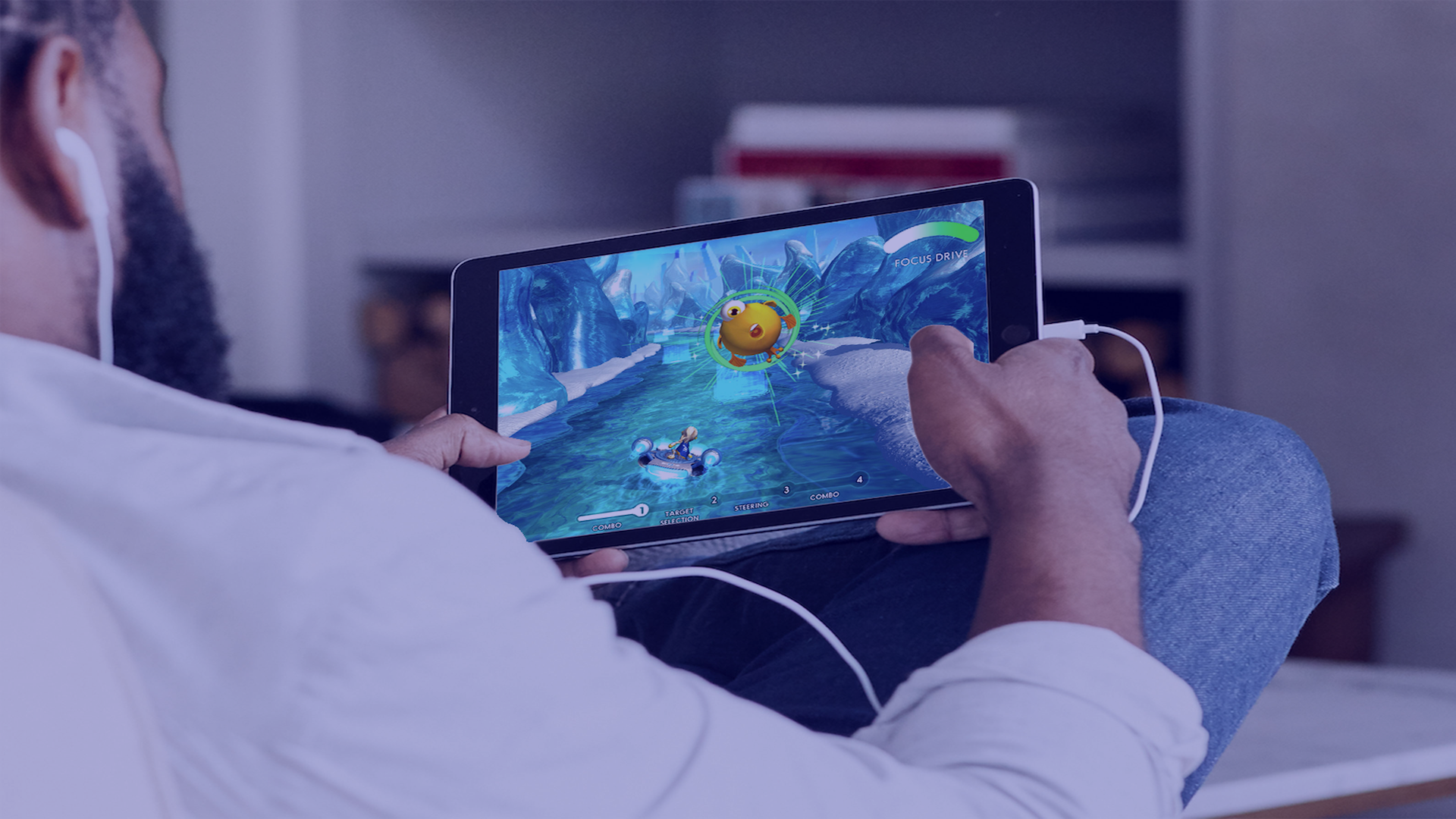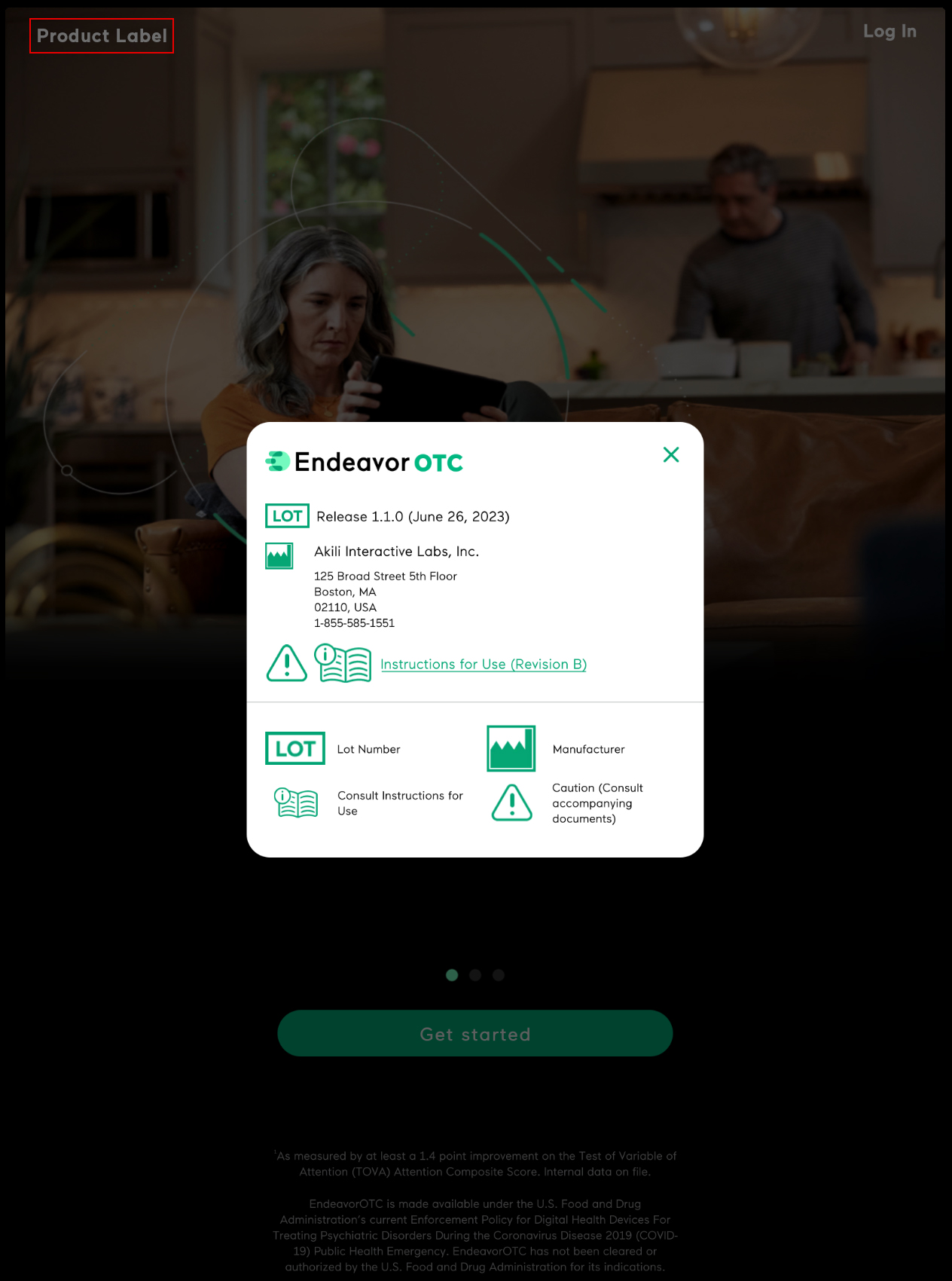What is EndeavorOTC?

Research in cognitive functioning and mental health has progressed exponentially in the past century—but have you noticed that treatments for mental health symptoms have remained largely the same? For decades, there have been two primary options for treating attention-deficit/hyperactivity disorder (ADHD) and associated cognitive impairments: medication and cognitive-behavioral therapy (CBT).
Patients with ADHD have had the options of stimulant medications (such as Adderall or Ritalin), nonstimulant medication (such as Strattera or Qelbree), or CBT to help reduce symptoms. These treatments can be highly effective, but they’re not for everyone. For example, many people experience side effects with stimulants. They’re also not readily available to everyone—with medication shortages and challenges accessing CBT, only a small fraction of patients receive these gold standard treatments.
The good news is that continued research on ADHD has helped neuroscientists and clinicians better understand the underlying sources of ADHD symptoms in the brain, providing important clues to how symptoms present. And with all this data comes a new form of treatment.
Enter EndeavorOTC, a game-based ADHD treatment that is clinically designed to treat cognitive impairment at the source and improve focus in adults. It’s built with the same technology behind EndeavorRx, the world’s first FDA-authorized prescription video game treatment for pediatric ADHD. EndeavorOTC is currently under review by FDA and has not yet been authorized for any indications.
The treatment works by creating the exact environment your brain needs to strengthen multitasking abilities while suppressing distractions, a combination that leads to stronger focus and increased attention. Research from our clinical trials shows that once users are able to increase their focus in the game setting, that enhanced focus can transfer over to everyday life, helping users accomplish their goals in the real world.
EndeavorOTC is a digital therapeutic, a new classification of medical treatments delivered through digital channels. So what’s considered a digital therapeutic and what’s not? Let’s get into it.
What are digital therapeutics?
As defined by the Digital Therapeutics Alliance, digital therapeutics (or DTx) are health softwares created to treat or alleviate a disease, disorder, condition, or injury by delivering a medical intervention. While digital therapeutics can treat a range of mental and physical conditions, they share several key components, including being upheld to the highest regulatory standards and following guiding principles:
-
Evidence.
First and foremost, DTx must be evidence-based treatments, meaning their trial results should demonstrate clinically significant outcomes in peer reviewed publications.
Translation: No snake oil allowed.
-
User research.
Companies should be responsible for collecting, analyzing, and applying real-world evidence to their product designs.
Translation: Make sure products bring real results for real people.
-
Transparency.
Companies that create these treatments should only make claims appropriate to clinical validation, regulatory status, and marketing authorization.
Translation: No lying about patient outcomes.
-
Security.
Products should incorporate patient privacy and security protections. The data these products collect are referred to as protected health information, or PHI, and therefore are highly sensitive. Unlike other software platforms, digital therapeutic companies cannot sell user data to third parties.
Translation: Highly protected user data.
-
Regulation.
Digital therapeutic products are reviewed and certified by regulatory bodies, such as the FDA, to verify product claims of risk, efficacy, and intended use.
Translation: Validated by experts, similar to medications.
The above list can be helpful in determining the validity of wellness apps compared to digital therapeutic products. For example, most diet, meditation, or sleep apps—while helpful—are not digital therapeutics, which means they are not subject to the same stringent regulation around efficacy and safety.
Being a wellness app allows them more freedom in their business and purchasing models. For instance, they have the option to host advertisements, sell user data, and make updates without research, all things that can keep the maintenance of these apps more affordable.
With the costs associated with data security, academic research, official regulation, publishing, and user research, building and maintaining a digital therapeutic costs significantly more money than an average app. And while they might cost more than a wellness app, digital therapeutics are usually much more affordable than medication or cognitive behavioral therapy. In fact, a 2016 survey conducted by ADDitude reported that adults spend $1,493 per year out of pocket for ADHD-related doctor and therapist appointments and $735 per year out of pocket on ADHD medications. In contrast, the current cost of EndeavorOTC is $129.99 for an annual subscription.
The science behind EndeavorOTC
At Akili, our goal is to constantly improve our product for those with ADHD through ongoing research on user needs and product results. Our latest clinical trial evaluated the impact of the treatment in adults with ADHD with three key takeaways:

Adult participants showed an 85% improvement in their ability to focus and 70%1 improvement in life productivity.2 In the graphic below, we can see the dramatic increase in attentional functioning before and after participants used EndeavorOTC for six weeks.
These results were found in participants that were also engaging in behavioral therapy, those who were taking medication, as well as those who were not treating their ADHD symptoms outside of the clinical trial. For more information about our clinical trials and original research, check out the study details here.
How EndeavorOTC Works
The treatment encourages users to constantly shift between multiple tasks competing for attention while completing video game-like missions. The adaptive algorithm uses performance data to automatically adjust the difficulty level to each person’s individual needs, so the tasks stretch that user’s ability, which is key to promoting growth and change in the brain. This is one of the major benefits of digital therapeutics: personalization down to the second with data that guides the treatment in real time.
On screen, the treatment consists of two simultaneous tasks: navigation and targeting. The user’s primary goal is to keep their vehicle on course while capturing targets and ignoring distractors.
“These factors are what we think really matter in life,” says Andy Heusser, Director of Data Science at Akili. “Accurately and quickly managing distractions, and then coming back to your task at hand is a lot like the real world. The skills are analogous to what we’re trying to solve for users.” This transfer of skill to everyday life is one thing that Akili believes separates the EndeavorOTC treatment from brain training activities.
Brain training vs. brain strengthening
In recent years, brain training apps have gained popularity. These tools rely primarily on constant repetition in a process called “drill and practice,” which is an approach to learning that originated in the 1940s and is one of the earliest psychological theories, known as “behaviorism.” As the field of cognitive psychology progressed, research studies began to emerge demonstrating that this repetition-based brain training showed little to no benefit outside of the specific tasks practiced in the training.3 Given the lack of empirical evidence on cognitive impairment, it’s unsurprising that these brain training tools are typically not labeled digital therapeutics.
Conversely, brain strengthening comes from the concept of neuroplasticity, which is the ability to fundamentally change or rewire the brain. This concept of neuroplasticity can be seen in EndeavorOTC’s treatment. Instead of repeatedly practicing individual activities, it requires the brain to carry out multiple activities simultaneously at maximum ability, creating competition among mental processes, and causing the brain to adjust itself to enable the most important process to succeed. This “brain adjustment” is what then allows users to transfer their increased focus from the game to their everyday lives. In short, brain training will help an individual succeed at one specific task while brain strengthening will help an individual succeed at tasks in general.
“What’s different about EndeavorOTC is that it’s actually changing the functioning of the very cognitive system that is not optimal,” – Tony Simon Ph.D., Akili’s Head of Cognitive Science
Who built EndeavorOTC?
We’re glad you asked. EndeavorOTC is a product built by parent company Akili– the same company that created EndeavorRx, the world’s first FDA–authorized prescription video game treatment for pediatric ADHD.
As a digital therapeutic, EndeavorOTC was built by neuroscientists, cognitive scientists, clinical psychologists, and other healthcare professionals. Collectively, their research backgrounds span neurodevelopmental disorders, neurotherapeutics, molecular biophysics, biochemistry, ADHD treatment efficacy in girls and women, human psychopharmacology, ADHD across the lifespan, and digital biomarkers. Read more about our executive team and board here.
